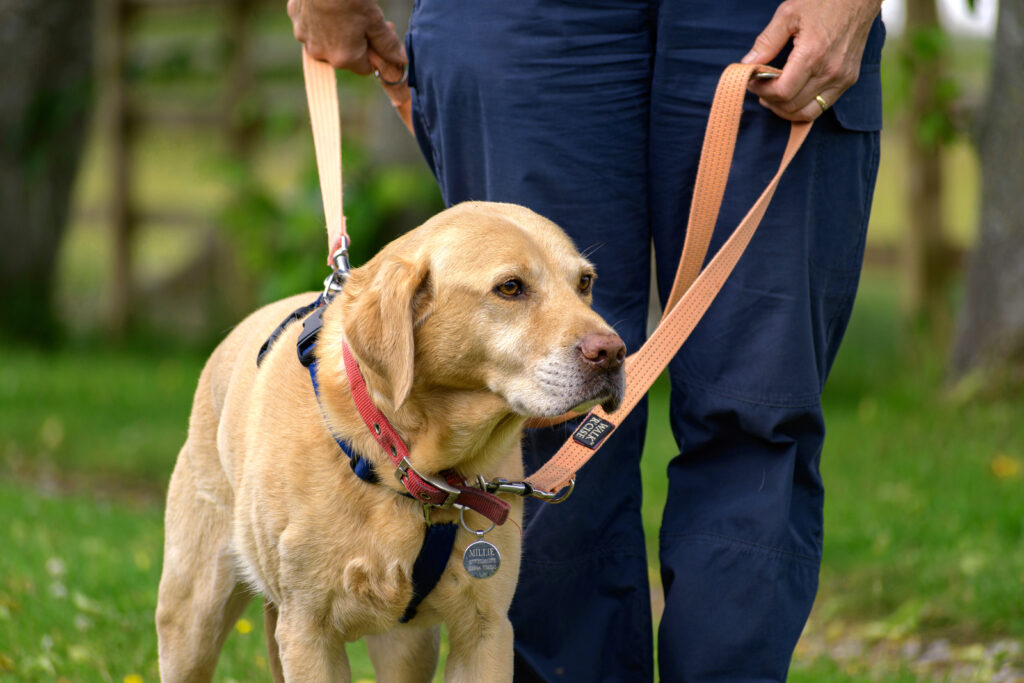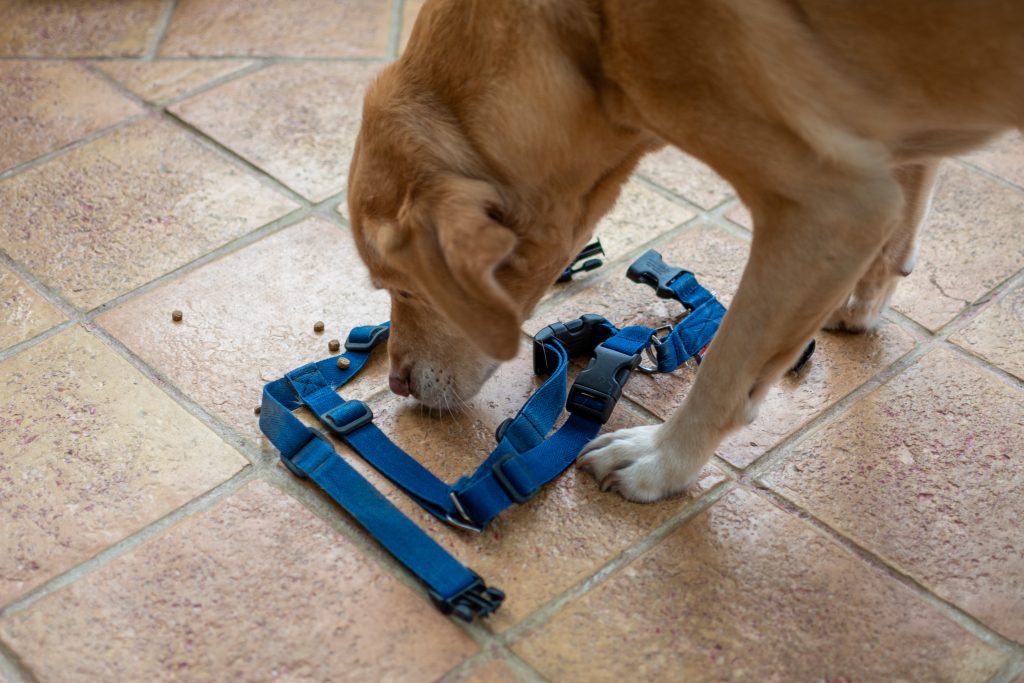How to Harness Train Your Dog
 Copyright Tommy Taylor
Copyright Tommy TaylorHarnesses generally tend to be more comfortable and help to control a dog without putting pressure around the sensitive structures around the neck and throat. However, fitting them on a fearful dog can be a cause of stress and requires a sensitive approach.
Learn more about how to choose a harness and introduce it to your dog in my resource below, which feature numerous recommended products:
The Training Steps
- Start by leaving the harness in the areas of the home where the dog spends most of their time, allowing them to see it and investigate it with their noses in their own time.
- Provided they don’t show any signs of alarm, place it somewhere close-by (but not encroaching on their space) whilst they are engaged in doing something pleasant. This should help them begin to make positive associations with it.
- After a few days, lay it somewhere with treats scattered around it so they have to get closer still, making sure they do so on their own terms (see Pic. 1).
- Gradually, if all goes well, the harness can be lifted so that the part that goes over their head forms a loop. You or a helper can then pass a hand through the loop, offering the dog a treat. It’s important not to rush this stage as advancing the loop over the head too soon can be frightening (see Pic. 2).
- Some dogs really don’t like the feeling of someone approaching them head on. For that reason, I prefer to place myself at the side of the dog so they don’t feel threatened.
- Very gradually, the hand with the treat in it should be withdraw so that the dog has to advance closer to the loop. Work should continue until eventually they are putting their head through it.
- For extremely nervous dogs, make sure you have selected a harness with a neck clip so they don’t have to put their head through the loop. Instead work on desensitising them to the feel of it on their body before moving on to the next step.
- At this stage, the harness can be briefly laid over the back of the neck, making sure that treats are still being given.
- In between this process it’s a good idea to introduce them to the sound of the clasps opening and closing. It’s often this noise that can startle a dog, especially if they are noise sensitive. Begin this procedure at a comfortable distance away from them, again, whilst they are doing something pleasant. Progress to working at a closer proximity and with each click of the clasp follow up with a treat so that the sound predicts something good is happening.
- Once the dog is relaxed about hearing the clasps, and is comfortable with the sensation of the harness on their body, one of the clasps can be fastened. Treats should be still given in abundance.
- Continue in this way, breaking the task into very small steps, until the harness is in situ and both clasps are fastened.
- Now it’s time to get them used to wearing the harness. Initially this should be only for a few seconds, slowly progressing to longer periods of time. Lots of praise, treats and maybe even a short game should be initiated.
- If at any time the dog shows any signs of fear or anxiety just go back in their training, to a stage they were comfortable with, and proceed more slowly.

